Abstract
1. Pure responses generated by the centre response mechanism of off-centre cells or the surround response mechanism of on-centre cells were studied in the cat by recording from single optic tract fibres while applying slow square-waves of light of varying duration but constant luminance.
2. The response, whether due to a centre or a surround mechanism, consisted of a rapid decrease in firing frequency at onset of light, followed by a gradual recovery of firing rate while the light was on. The time course of the recovery was exponential. At `off' there was a sudden increase in firing rate (off-discharge) followed by an exponential, more gradual, decay of impulse frequency. Both the gradual recovery during illumination and the off-discharge were absent for the shortest flashes.
3. Perhaps the most significant result was that the behaviour exhibited by responses generated by one only of the response mechanisms, centre or surround, is predictable and much simpler than that exhibited by mixed responses; the magnitude of the off-discharge increased, the latency decreased monotonically with increased flash duration and the magnitude of the off-discharge was linearly related to the level of firing at the moment when the light went off.
4. For two off-centre cells gain was studied by recording the response to a brief test flash superimposed upon a slow gain changing square-wave stimulus. Centre mechanism gain decreased promptly upon application of the gain changing light, stayed low while it was on, only to return promptly to its former value when the gain changing light went off.
5. A simple model which qualitatively accounts for the results (excluding latency) was suggested. The onset of light initiates both an inhibitory and excitatory process whose sum constitutes the transient input to the cell. The excitatory process grows at a slower rate so that `excitation wins more and more as the light remains on'. Similarly after `off' the excitatory process decays slower than the inhibitory one, thus leaving the cell with a transient excess of net-excitation.
Full text
PDF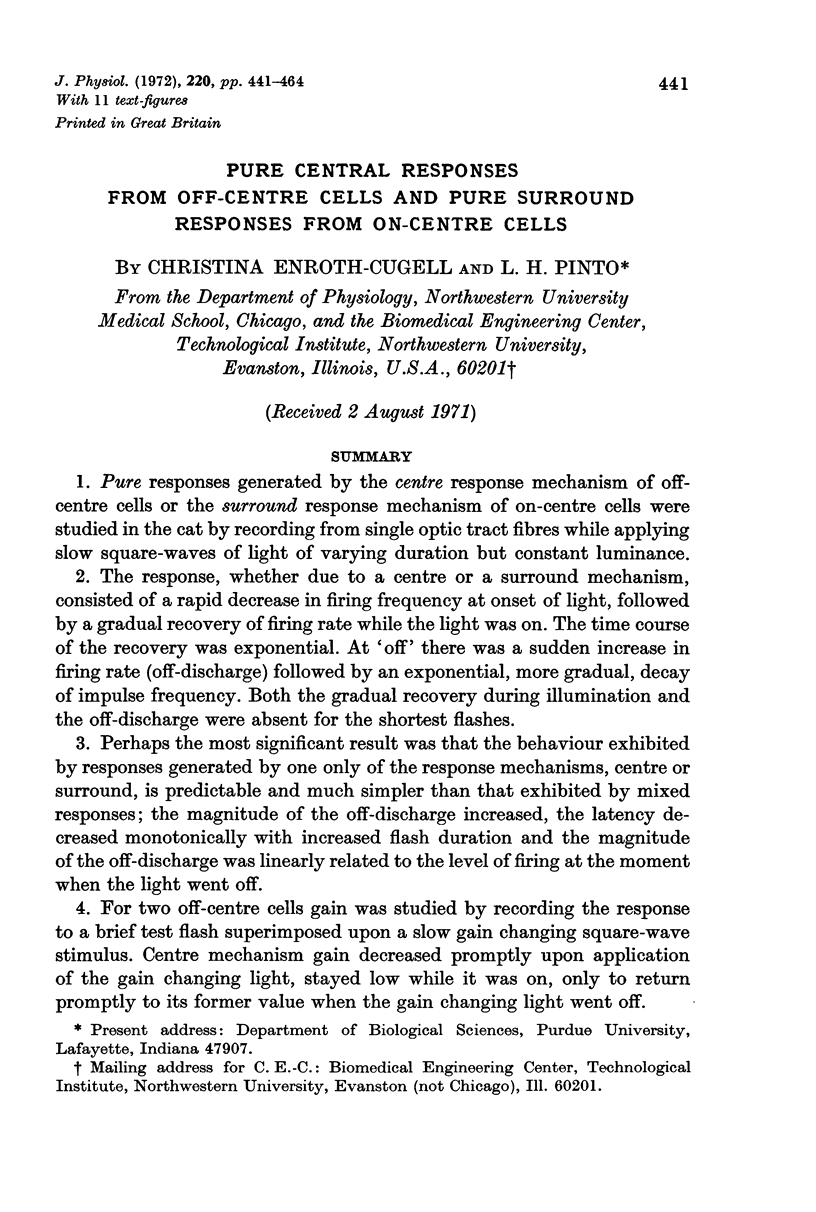


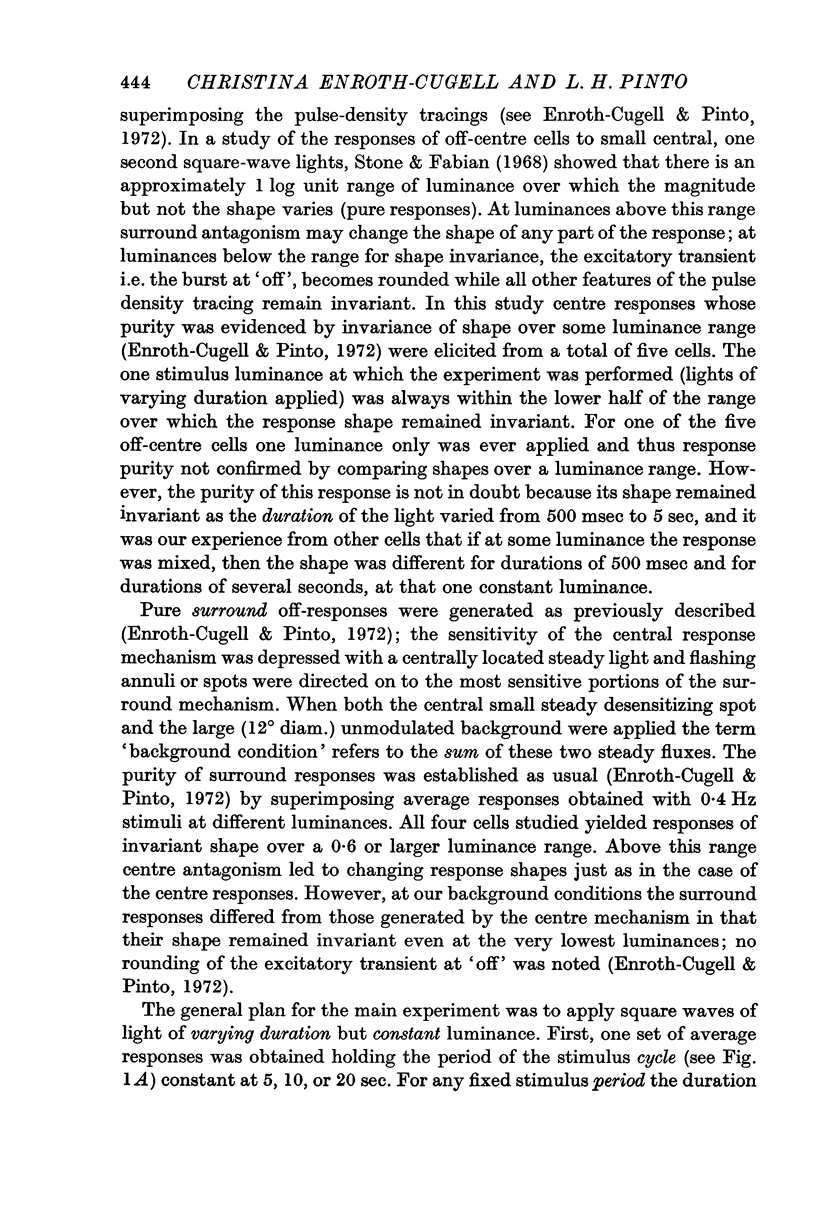

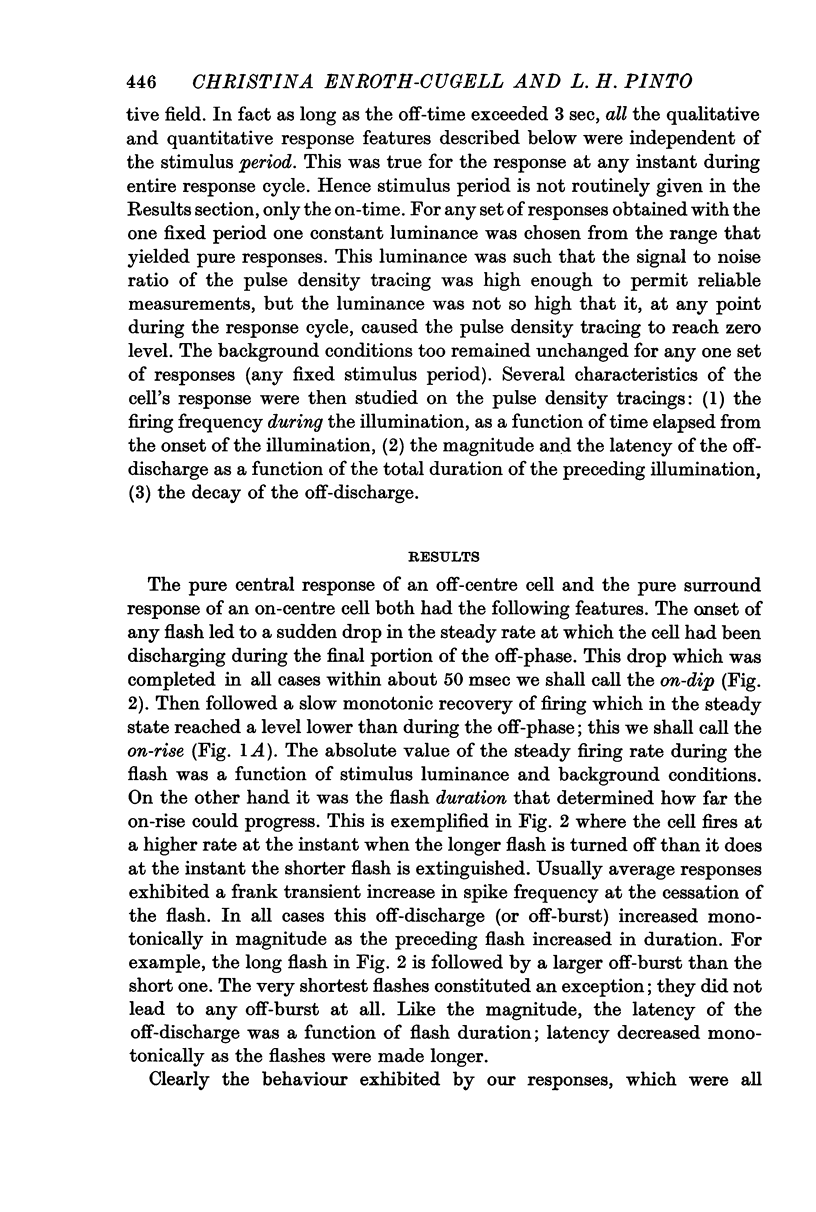
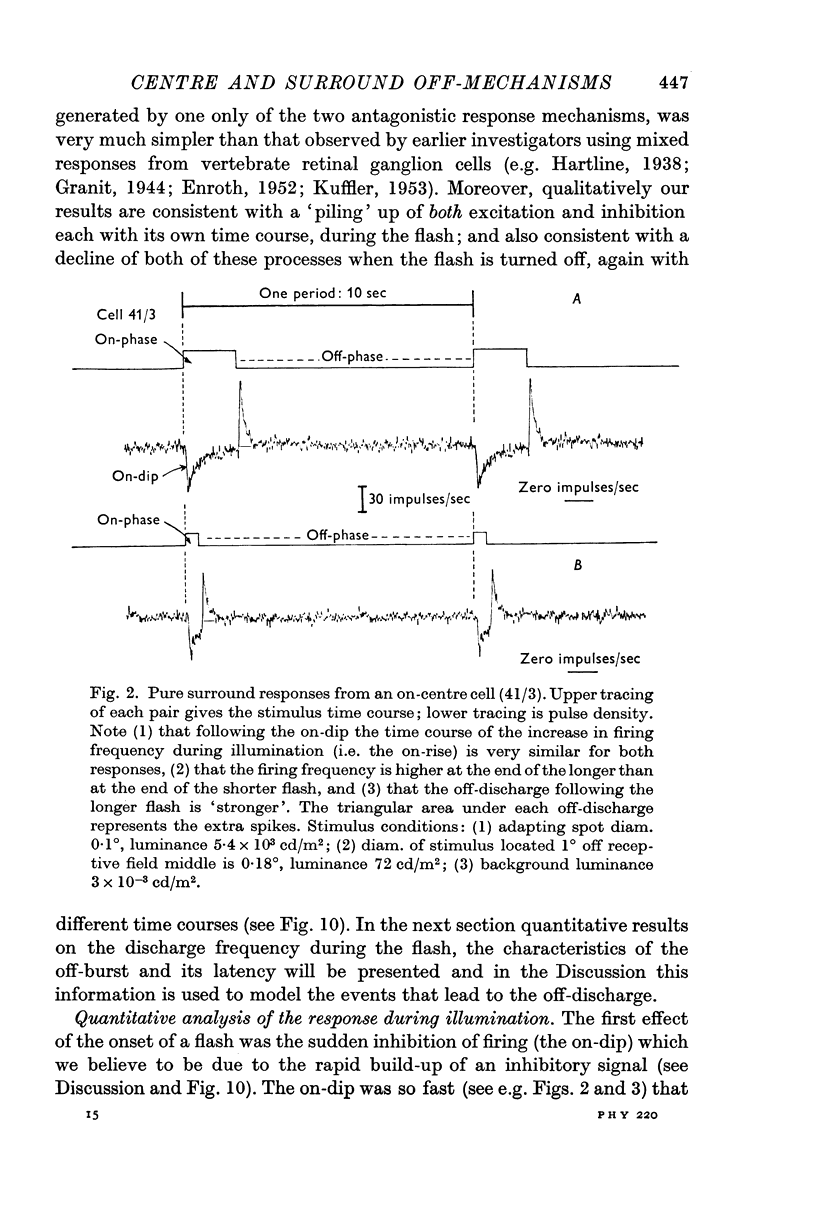
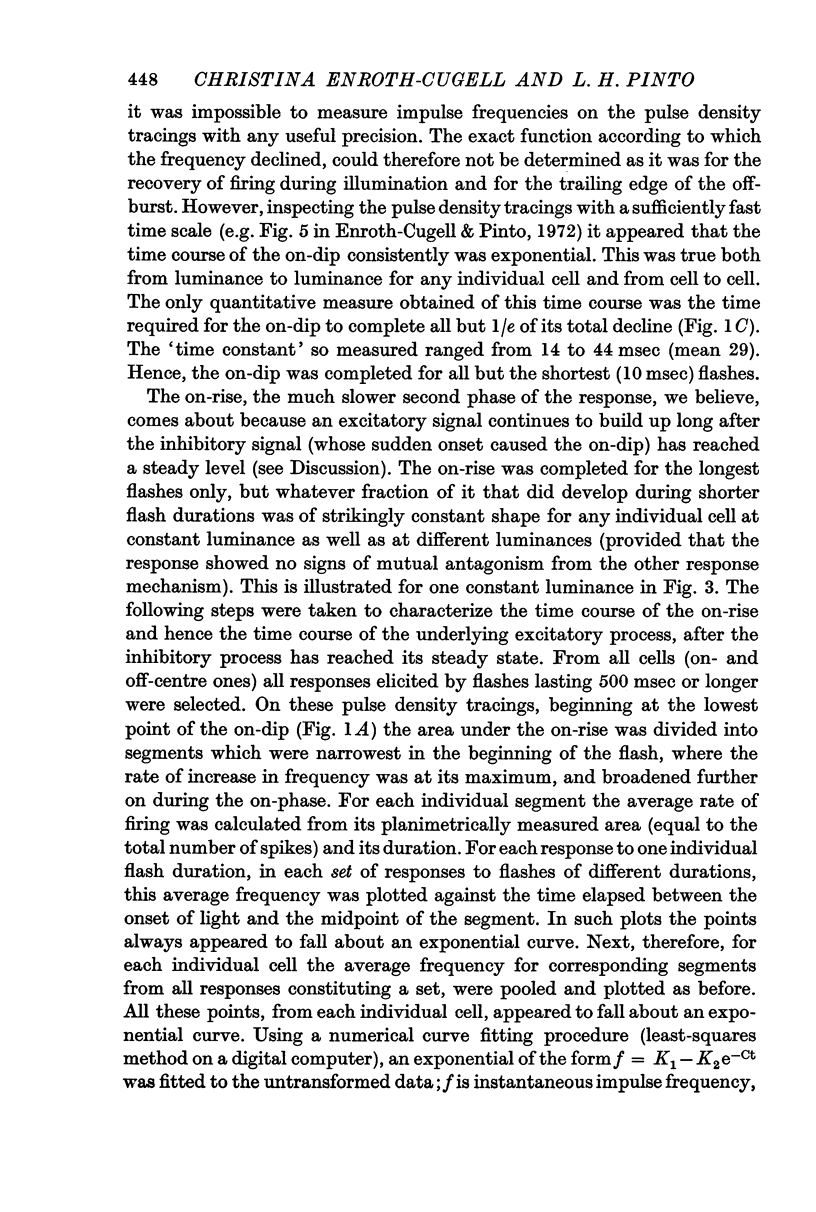
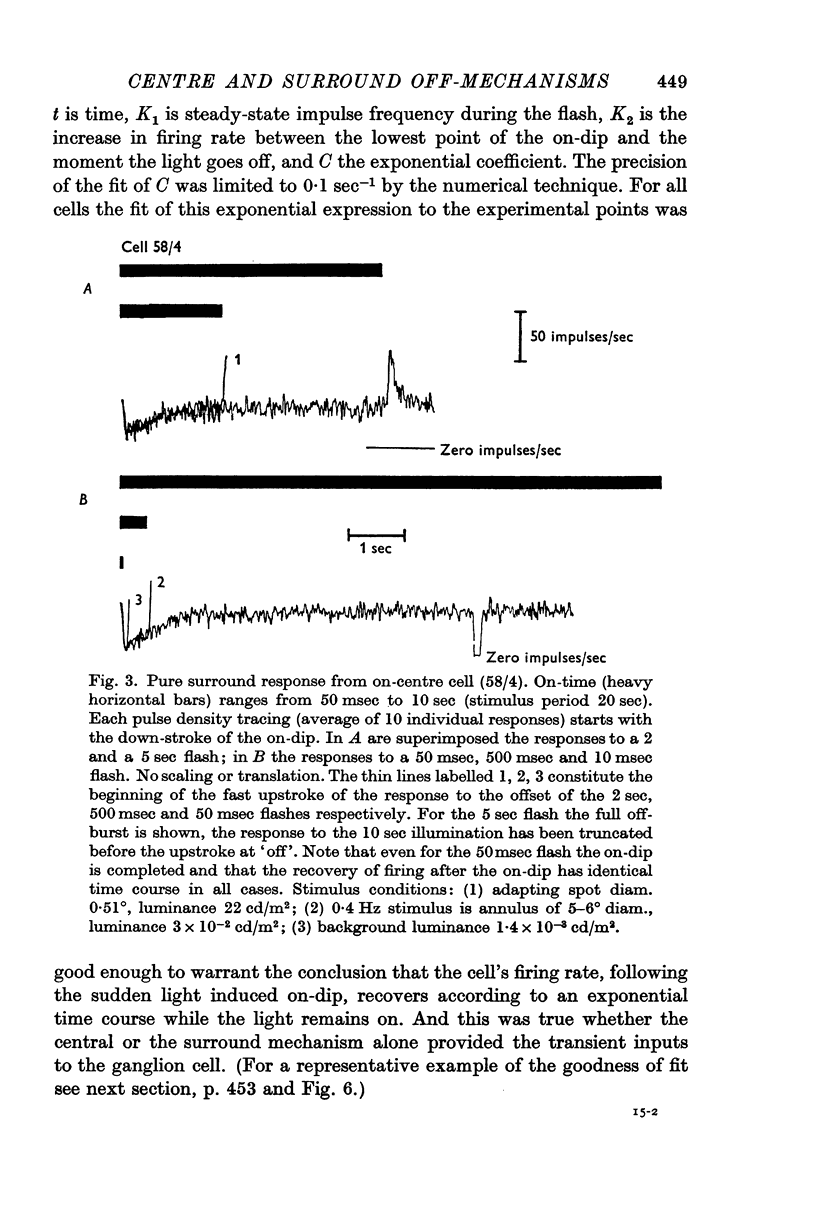
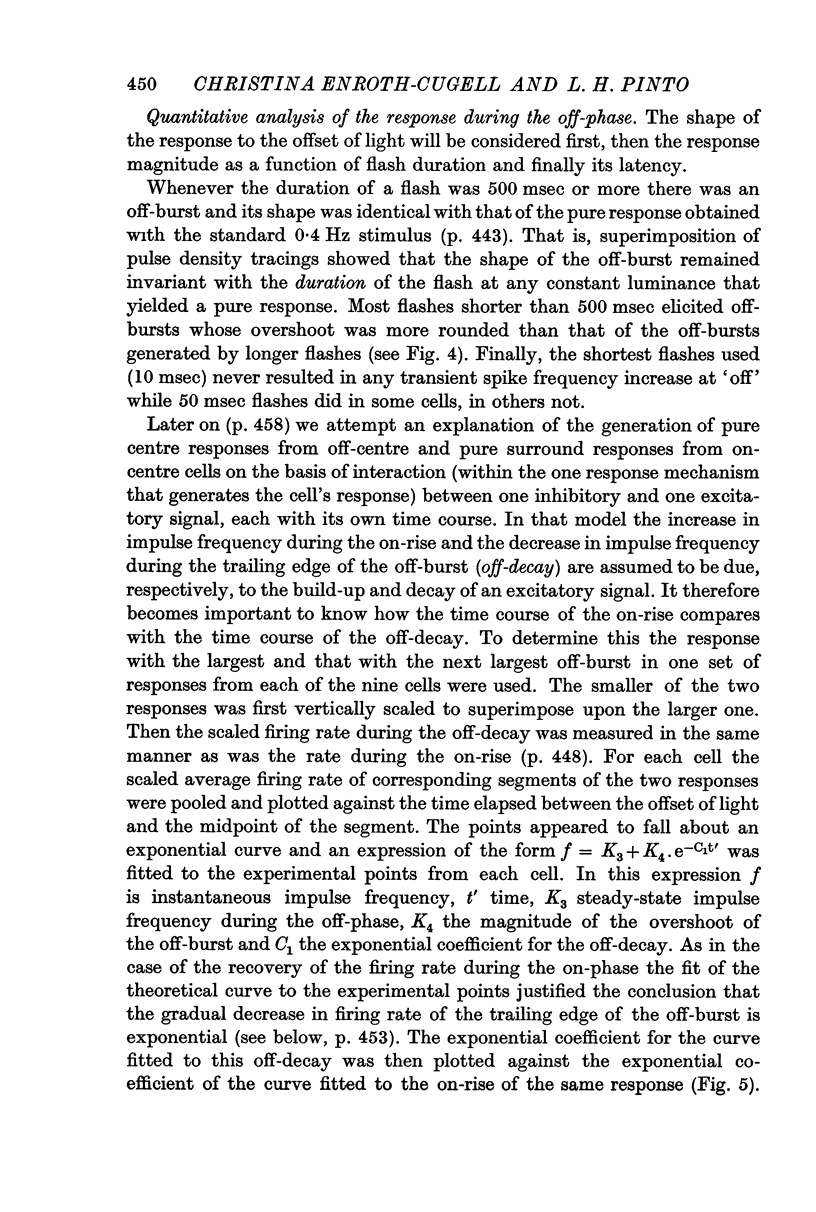

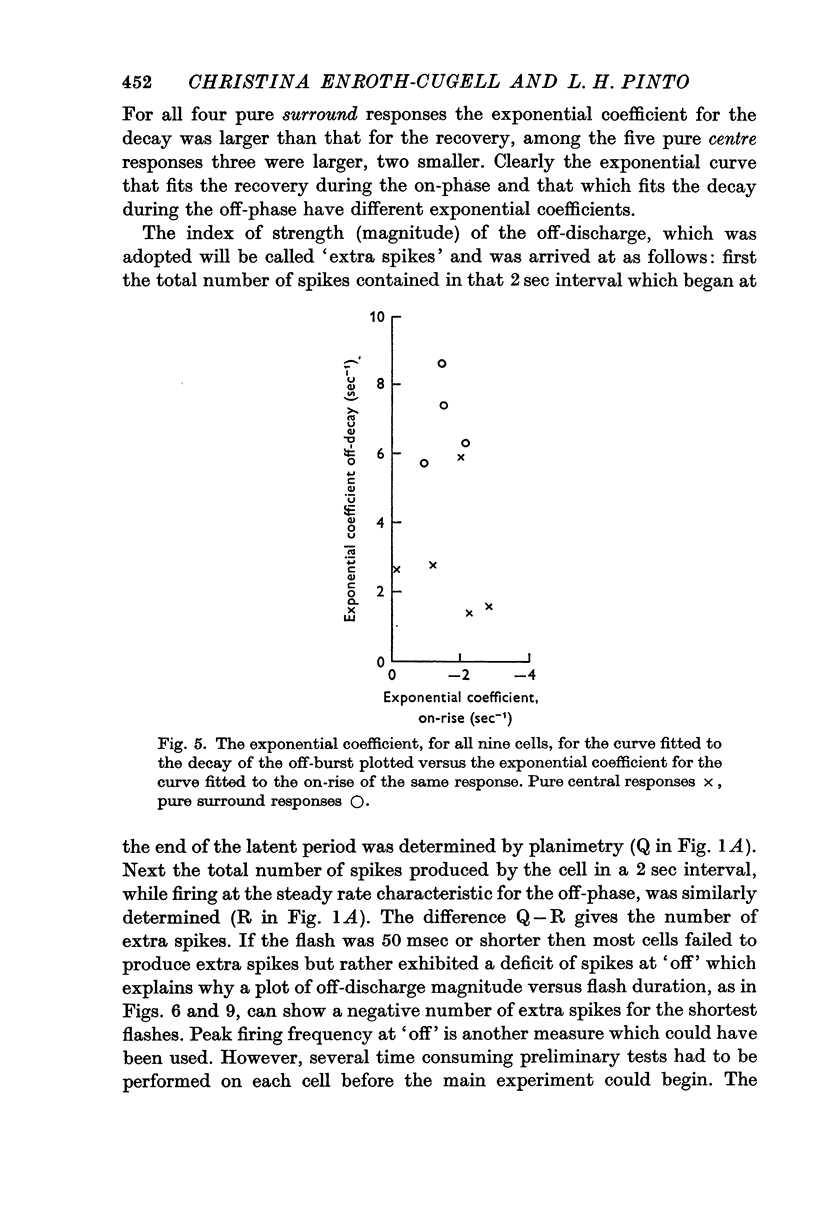

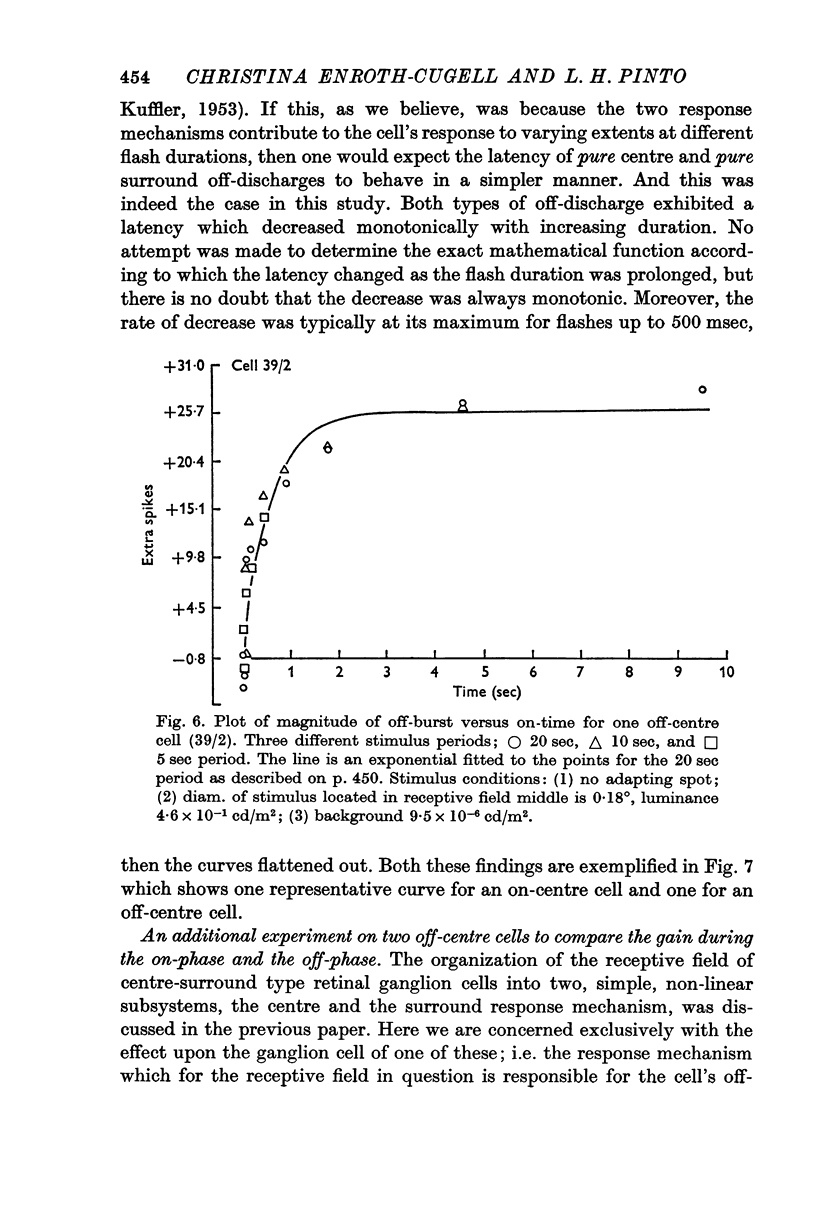

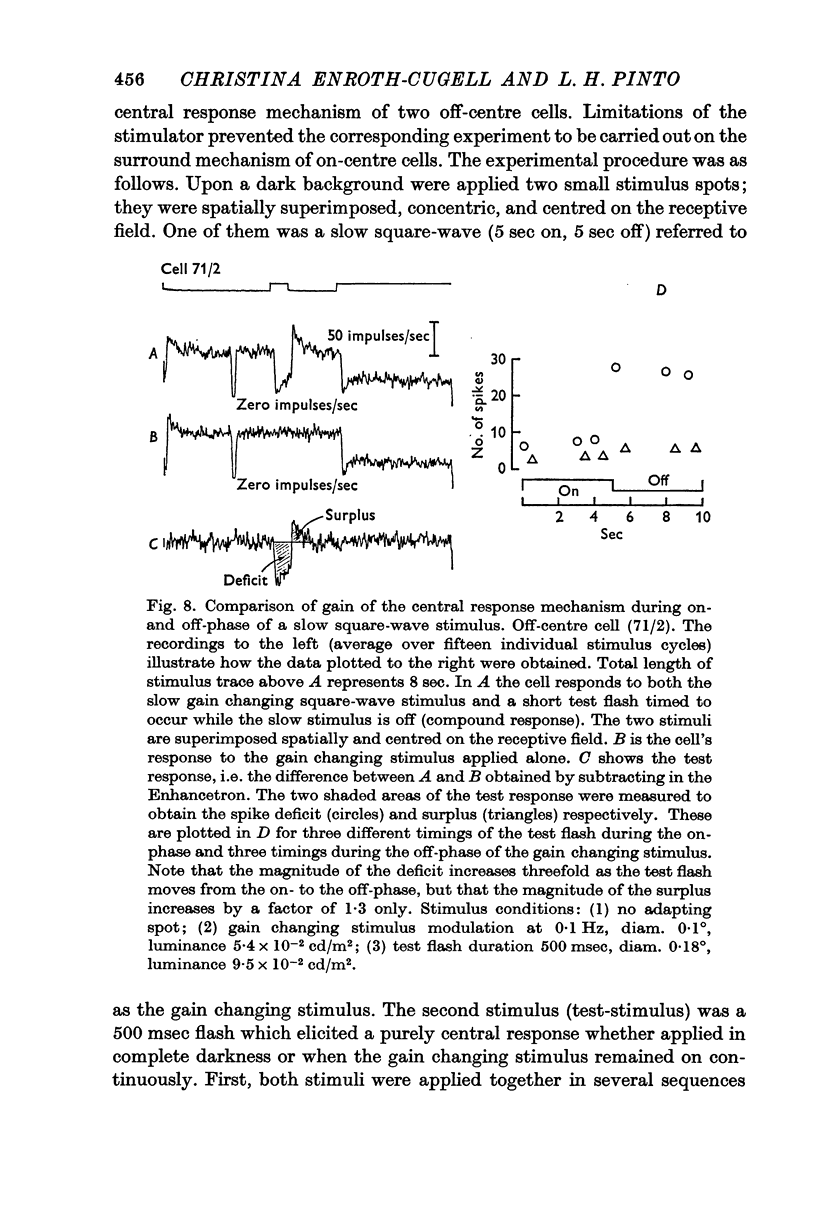
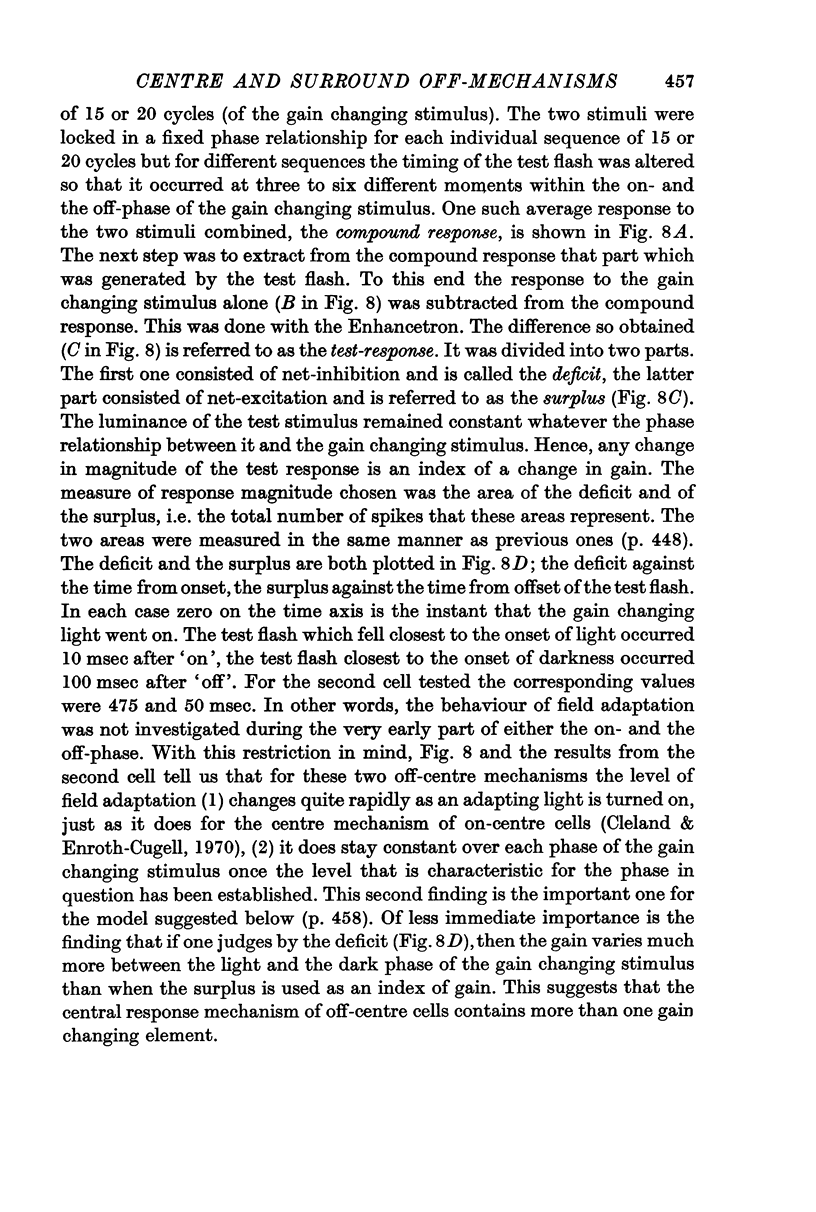

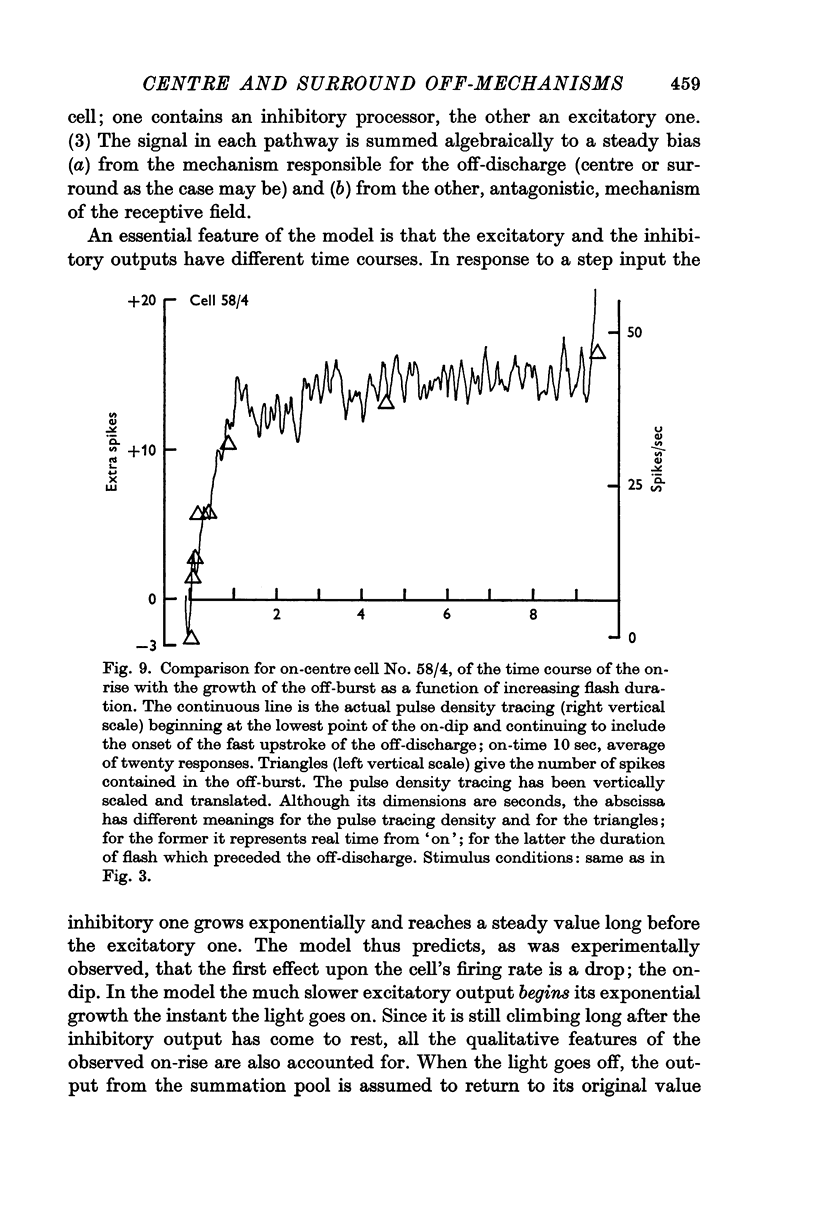
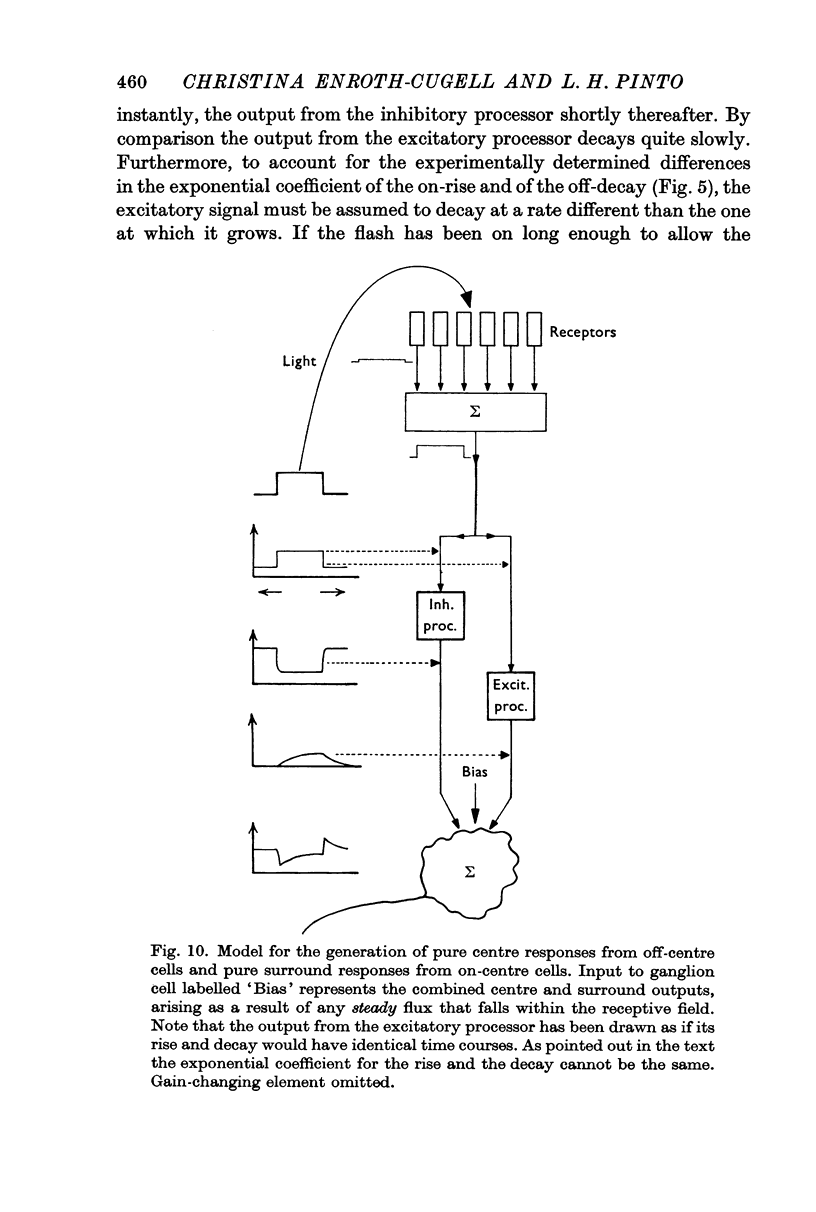

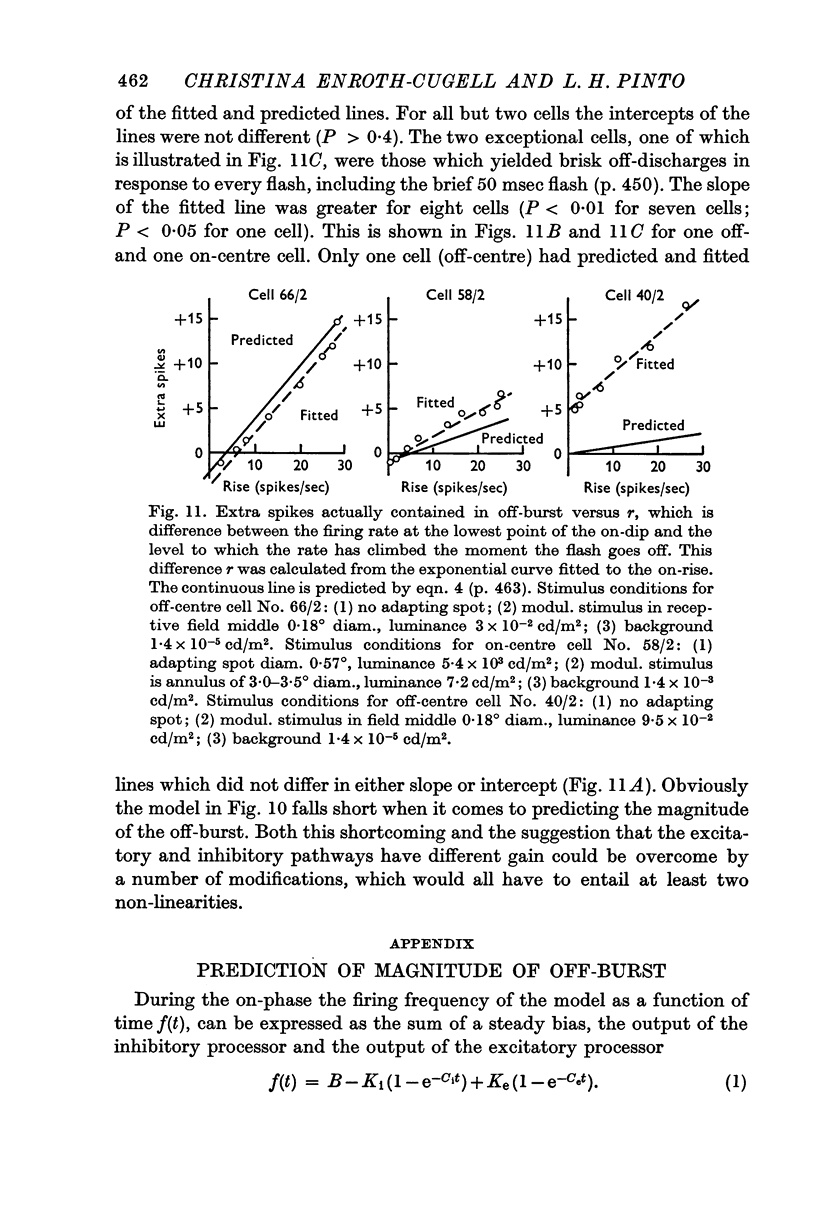
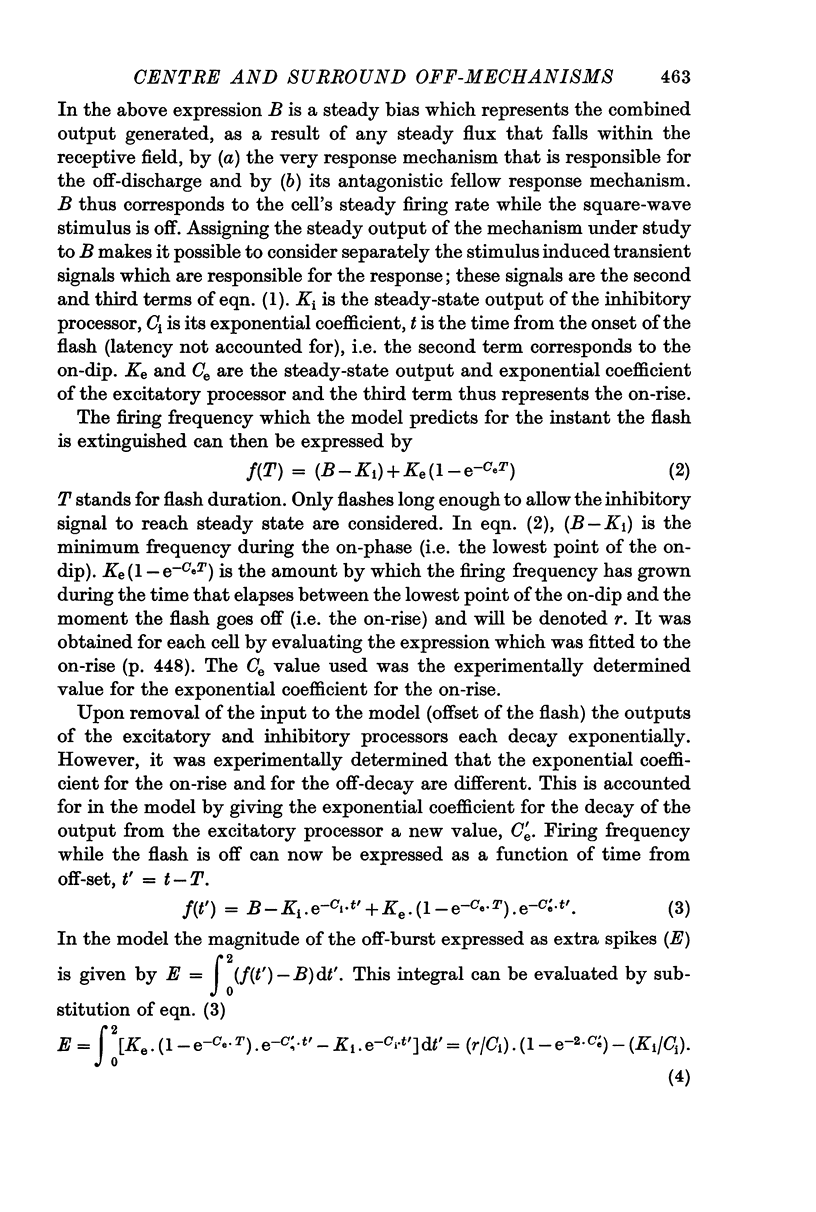
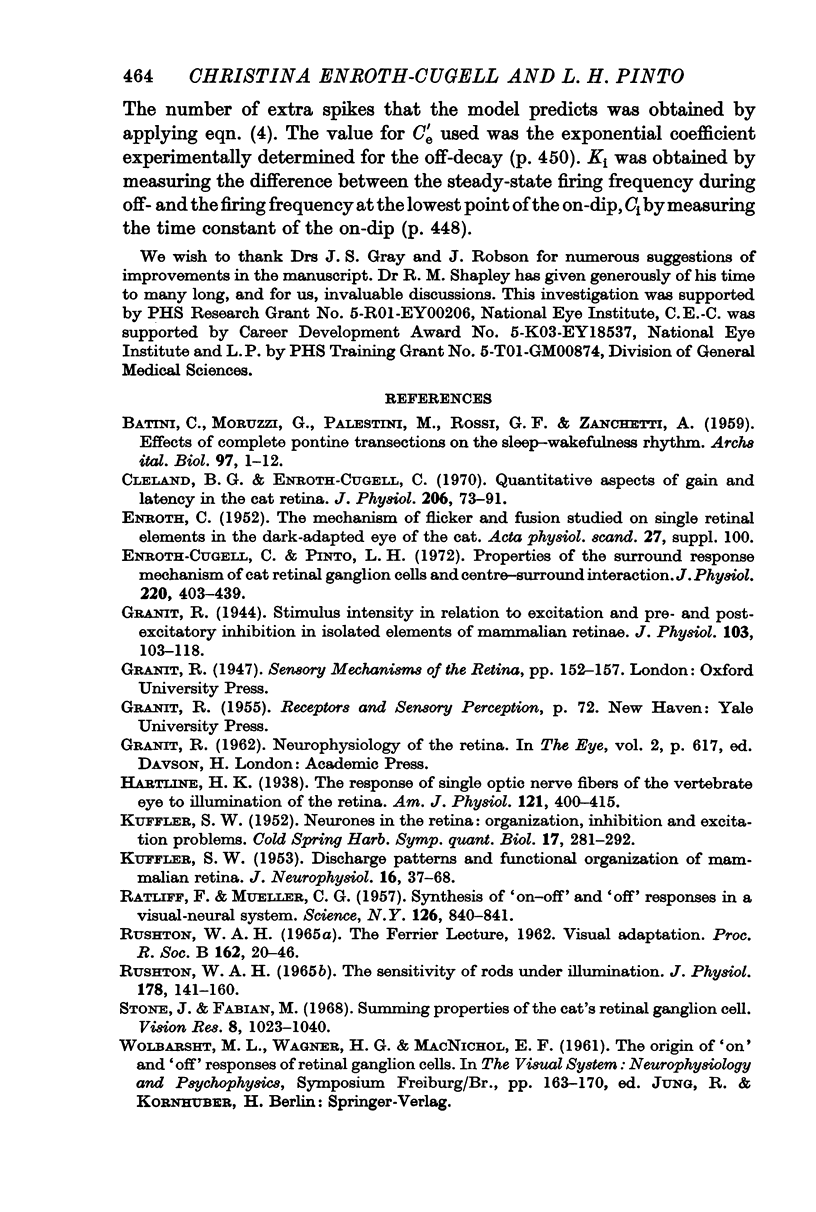
Selected References
These references are in PubMed. This may not be the complete list of references from this article.
- Cleland B. G., Enroth-Cugell C. Quantitative aspects of gain and latency in the cat retina. J Physiol. 1970 Jan;206(1):73–91. doi: 10.1113/jphysiol.1970.sp008998. [DOI] [PMC free article] [PubMed] [Google Scholar]
- Enroth-Cugell C., Pinto L. H. Properties of the surround response mechanism of cat retinal ganglion cells and centre-surround interaction. J Physiol. 1972 Jan;220(2):403–439. doi: 10.1113/jphysiol.1972.sp009714. [DOI] [PMC free article] [PubMed] [Google Scholar]
- Granit R. Stimulus intensity in relation to excitation and pre- and post-excitatory inhibition in isolated elements of mammalian retinae. J Physiol. 1944 Jun 15;103(1):103–118. doi: 10.1113/jphysiol.1944.sp004065. [DOI] [PMC free article] [PubMed] [Google Scholar]
- KUFFLER S. W. Discharge patterns and functional organization of mammalian retina. J Neurophysiol. 1953 Jan;16(1):37–68. doi: 10.1152/jn.1953.16.1.37. [DOI] [PubMed] [Google Scholar]
- KUFFLER S. W. Neurons in the retina; organization, inhibition and excitation problems. Cold Spring Harb Symp Quant Biol. 1952;17:281–292. doi: 10.1101/sqb.1952.017.01.026. [DOI] [PubMed] [Google Scholar]
- RATLIFF F., MUELLER C. G. Synthesis of "on-off" and "of" responses in a visual-neural system. Science. 1957 Oct 25;126(3278):840–841. doi: 10.1126/science.126.3278.840-a. [DOI] [PubMed] [Google Scholar]
- RUSHTON W. A. THE SENSITIVITY OF RODS UNDER ILLUMINATION. J Physiol. 1965 May;178:141–160. doi: 10.1113/jphysiol.1965.sp007620. [DOI] [PMC free article] [PubMed] [Google Scholar]
- Stone J., Fabian M. Summing properties of the cat's retinal ganglion cell. Vision Res. 1968 Aug;8(8):1023–1040. doi: 10.1016/0042-6989(68)90075-8. [DOI] [PubMed] [Google Scholar]


